

A Compelling Cover Letter for a Fellowship Position
Winning a fellowship is a huge accomplishment, whether from your university or from an outside source. Because they are so highly competitive, students can place such an achievement on their resumes/CVs, later on, will always have an edge.
Applying for a fellowship is much like applying for a job. You will need a strong resume that is accompanied by a cover letter. That cover letter for a fellowship is a critical piece of your application packet because it is your personal introduction and encapsulation of your major achievements during your academic career thus far.
As well, you want to show that you have clear career goals and how this fellowship will help in their achievement. To help with this, we have included a sample letter and some writing tips.
Cover Letter Sample For Fellowship in .docx Format
Here is a sample cover letter from a student who is seeking a fellowship to undertake a special project through an academic department at their university.
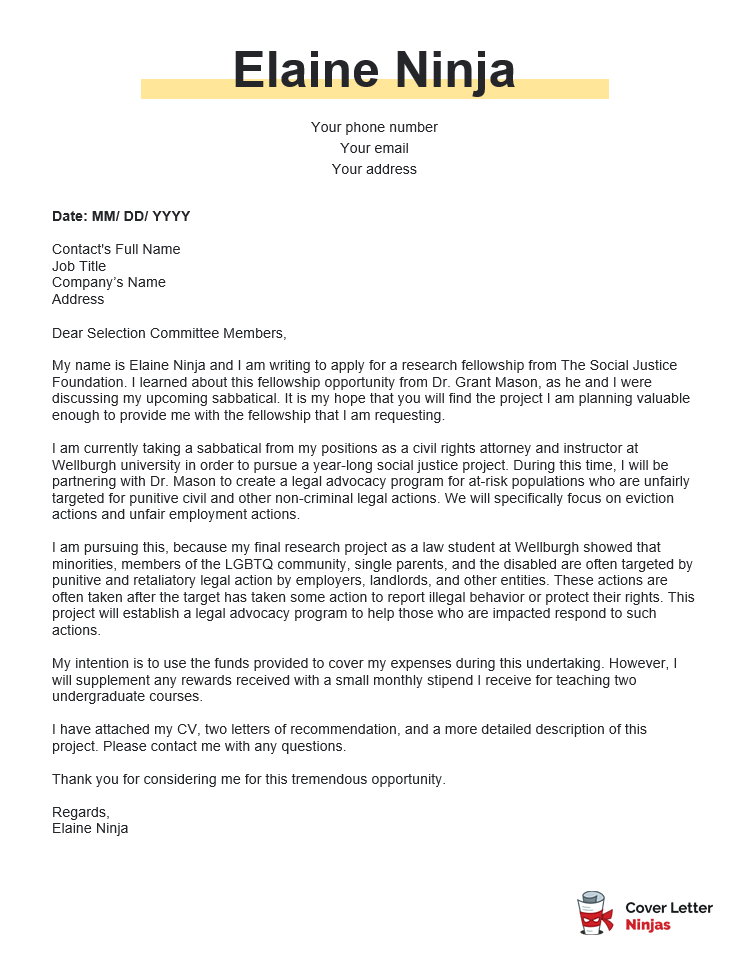
Download example (Word version)
Cover Letter Example For Fellowship – Plain Text
Dear Selection Committee Members,
My name is Elaine Ninja and I am writing to apply for a research fellowship from The Social Justice Foundation. I learned about this fellowship opportunity from Dr. Grant Mason, as he and I were discussing my upcoming sabbatical. It is my hope that you will find the project I am planning valuable enough to provide me with the fellowship that I am requesting.
I am currently taking a sabbatical from my positions as a civil rights attorney and instructor at Wellburgh university in order to pursue a year-long social justice project. During this time, I will be partnering with Dr. Mason to create a legal advocacy program for at-risk populations who are unfairly targeted for punitive civil and other non-criminal legal actions. We will specifically focus on eviction actions and unfair employment actions.
I am pursuing this, because my final research project as a law student at Wellburgh showed that minorities, members of the LGBTQ community, single parents, and the disabled are often targeted by punitive and retaliatory legal action by employers, landlords, and other entities. These actions are often taken after the target has taken some action to report illegal behavior or protect their rights. This project will establish a legal advocacy program to help those who are impacted respond to such actions.
My intention is to use the funds provided to cover my expenses during this undertaking. However, I will supplement any rewards received with a small monthly stipend I receive for teaching two undergraduate courses.
I have attached my CV, two letters of recommendation, and a more detailed description of this project. Please contact me with any questions.
Thank you for considering me for this tremendous opportunity.
Regards, Elaine Ninja
Fellowship Cover Letter Writing Tips
It’s no secret that academic jobs and fellowships in particular are highly competitive. Nature Magazine reports that most early-career researchers need to file at least 15 applications to land a single offer. Moreover, job seekers who submit more applications end up getting a higher number of on-site interviews. What this data means for you is that you’d have to get a good dozen of customized cover letters ready. Below are several actionable tips to help you churn out those sample fellowship cover letters with high confidence!
Review The Requirements
While many grants and scholarships are intended for a wide range of students, that’s not the case with a fellowship. These are often rewarded to students or other academic professionals who are pursuing very specific academic or research goals. In the case of the example above, the applicant is conducting a project with the support of their university and employer.
The best way to be sure you qualify is to read the materials associated with the fellowship and get to know the purpose of the organization offering the award. This way you only go after options that you have a high chance of receiving.

Be Detailed-Oriented
Your CV and transcripts will only show what you have done so far. You are pursuing the fellowship to achieve future goals. This is your chance to introduce these goals and explain your intentions. Thus your letter should contain enough detail to help the reader fully understand your plans and concrete steps you intend to take to lead the project to successful completion.
Write as a Colleague, Not a Student
If you are applying for a fellowship, you are a degreed professional. Chances are you work in the field and may be in charge of undergraduate students in your department even if you are just a postdoctoral employee . You have established your competence in your academic discipline and should write your cover letter accordingly. Be confident in the value of your research and academic pursuits. Refer to yourself using proper titles. Show respect and gratitude for consideration, but don’t fawn. Avoid seeming as if you are asking for permission to pursue your planned course of action.
Final Tip: Show a Community Benefit
While there is nothing wrong with pursuing graduate education for career purposes, consider the perspective of the selection committee. In many cases, this group consists of individuals with a stake in your field, the university, and the community at large. They want to know that funding you is something that will be worthwhile to them and their goals. Use your letter to show how your education or research will be helpful to your school, local community, or your colleagues.
Other Cover Letter Samples
A lovely legal secretary cover letter example, persuasive property manager cover letter, a detailed lpn cover letter example, school nurse cover letter example and tips.
A huge collection of cover letters created by a ninja team of writers and career advisors. Learn how to write, style and file cover letters that employers actually enjoy reading.
© Copyright 2023 Cover Letter Ninjas
- Privacy Policy
- Cookie Policy
- Terms and Conditions
- Disclosure Policy
3 Tips for Writing a Stellar Cover Letter for Jobs and Fellowships

By Dawn Angellica Barcelona
Knowing how to write a solid cover letter is an essential part of many application processes, whether for a job, fellowship , grant application, or journal publication. A cover letter should convey to the hiring team or selection committee why you’re a great candidate for the organization or why your project should receive support or funding. Generally, a cover letter will be paired with another piece of an application. For job applications, cover letters are sent with your resume. For journal publication, your cover letter should accompany a writing sample. For a fellowship, your cover letter will be sent with your application materials such as personal statements or project proposals .
Whereas a resume shows a selection committee or hiring team your skills, accomplishments, and career trajectory, a cover letter is a chance to showcase the story behind your achievements and give the reader a sense of your personality. Think of your cover letter as an introduction to yourself.
1. Preparing to Write a Cover Letter
Before writing a cover letter, spend time doing the following:
- Find a particular fellowship or job description you’d like to apply to. Having an end goal will help you write your cover letter.
- Tailor your resume or CV to the job or fellowship you’re interested in pursuing.
- Do research on the organization or company you’re looking to join on their website or through blogs/articles about the organization.
Be able to answer the following:
- What does this organization do? What is its mission?
- What examples of projects and initiatives do they have?
- Why is this position open? What do they hope they will accomplish by hiring someone in this role or granting someone this fellowship?
- Who is on the selection or hiring committee?
2. How to Structure Your Cover Letter
If you’re not sure where to start with your cover letter, this structure can be a good place to start:
Header: This should include your full name, email address, and date of the letter.
Greeting: Who are you addressing the letter to? Be specific if possible.
First Paragraph: Use your first paragraph to introduce yourself, the role you’re applying for, and how you first came into contact with the organization or why the role resonates with you. Perhaps you have used the company’s products before or heard about the fellowship from a career fair. This is a good place to show enthusiasm!
Second Paragraph: This second paragraph should include a brief overview of your background as it specifically relates to the position. Include one or two specific details about a key achievement that is uniquely positioned to make you stand out. Choose experiences from your most recent roles when possible.
Third Paragraph: The third and final body paragraph in your cover letter can include another key achievement or you can relay a story that further illustrates your alignment with the role.
Sign Off : End your cover letter thanking the selection committee for taking the time to consider your application and choose a simple closing greeting such as “Sincerely” before including your full name again.
3. Common Mistakes and How to Avoid Them
A good cover letter excites the selection committee, but a cover letter with errors and mistakes can make a negative impression. Try to avoid these common mistakes.
Not addressing your cover letter to the appropriate person. When I review resumes, I see a common error where candidates will recycle their cover letters for multiple companies but forget to change the addressee. In some job descriptions, you might see details such as “this candidate will report directly to the CEO” that will help you personalize your cover letter. Look up the CEO’s name on the organization’s website and address your cover letter to them – they will likely be involved in your hiring process. You might not have as easy of a time figuring out who will be reviewing your application – in that case, you can write something like “Dear Fulbright Selection Committee” or “Dear (Company Name) Hiring Team” to be safe.
Not writing succinctly. Hiring and selection committees are often pressed for time and under deadlines and other work responsibilities, so ensure that your cover letter is brief. It should be no more than 3 paragraphs with no more than 3-4 sentences each. A dense-looking letter can cause the reader to skim what you wrote, which in effect makes your cover letter less persuasive. Make it easy on the selection committee and keep things short and simple.
Reiterating your resume verbatim. A resume is an objective list of your work experience, education, accomplishments, and relevant certifications, awards, or patents. A cover letter is a place to explain the value of your achievements and why your experience will make you a successful member of the organization. Avoid writing anything in your cover letter that can be read on a resume.
Once you are finished with a draft of your cover letter, take extra time to make sure there are no spelling errors or grammatical mistakes. You can ask a friend or an adviser to help you proofread. Reading your letter out loud can also be useful – if you are stumbling over any of your phrasings, this will tell you that you might need to simplify or clarify that sentence. When you feel like your cover letter and resume are ready to go, make sure to save your document as a PDF in order to retain your formatting before submitting your application.
While you’re waiting to hear back from jobs or fellowships, be sure to balance both self-care and interview preparation ! Best wishes for your next adventure.
If you enjoyed this article, you may want to check out Dawn’s other articles on ProFellow, including Recruiter Tips: How to Write An Effective One-Page Resume .

© 2023 ProFellow, LLC all rights reserved.
Related Posts:
- 3 Things You Need to Maximize Your Hiring Potential Post-Undergrad
- How to Tailor Your Resume and Cover Letter for Any Opportunity
- What Should I Ask to be Included in My Letter of Recommendation?
- #8: Get a Great Recommendation Letter, Part 1
- #8: Get a Great Recommendation Letter, Part 2
Application Tips , Cover Letter Tips , Dawn Angelicca Barcelona , Resume Tips
Fully Funded Master’s Programs in Mechanical Engineering
How americorps fellowships made juanita gordon a better communicator, find and win paid, competitive fellowships.
Be alerted about new fellowship calls for applications, get insider application tips, and learn about fully funded PhD and graduate programs
Fellowship Resources
- Calls for Applications
- Upcoming Fellowship Deadlines
- Fellowships Database
- Interviews with Fellows
- International Fellows Network
- Graduate Funding Directory
Fellowship Tips
- What is a Fellowship?
- Fully Funded Course
- Graduate School Funding
- Fellowship Application Tips
- Fulbright Application Tips
- Fellowship Application Guide
- Our Mission, History & Values
- ProFellow Winner Testimonials
- Fully Funded Course Testimonials
- Fellowship Industry Report
- Advertise With Us
- Terms & Privacy
ProFellow is the go-to source for information on professional and academic fellowships, created by fellows for aspiring fellows.
©2011-2024 ProFellow, LLC. All rights reserved.
- Get the Job
- Resumes and CVs
- Applications
- Cover Letters
- Professional References
Professional Licenses and Exams
- Get a Promotion
- Negotiation
- Professional Ethics
- Professionalism
- Dealing with Coworkers
- Dealing with Bosses
Communication Skills
Managing the office, disabilities, harassment and discrimination, unemployment.
- Career Paths
- Compare Careers
- Switching Careers
- Training and Certifications
- Start a Company
- Internships and Apprenticeships
- Entry Level Jobs
- College Degrees
Growth Trends for Related Jobs
How to write a cover letter for a fellowship.

Graduate and postgraduate students often must pursue a fellowship for financial support to conduct their research or to complete training or internships necessary for school and their career. A cover letter is typically the first thing the recipient reads in your fellowship application, so it needs to be convincing and well-written.
Start a new document on your computer and choose a cover letter template if one is available. Make a header that includes your name (in larger and bolder font), followed by your address, phone number, email address and website (if applicable).
Type a formal salutation that addresses the recipient by name. This may mean you have to do extra research to find out who will be considering your letter and application. It is considered bad form to open a cover letter with a generic salutation, and your goal is to establish a personal connection with the individual who will be deciding on whether or not to grant your fellowship.
Type two to three sentences for the first paragraph to explain who you are, which university or organization you are a student or member of and what type of fellowship you are applying for.
Type five to seven sentences as your middle paragraph. This section should explain the work your or your organization is performing, its purpose and its benefits, and a short history of the work you have accomplished so far. In a polite but direct tone, provide a budget estimate of how much you will need granted in your fellowship to cover program costs as well as living expenses. Also provide information about your living situation, including housing, transportation and location. Explain that a more thorough summary of your project is contained in your fellowship proposal.
Type two to four sentences as your closing paragraph. Indicate that your resume (if required) and fellowship proposal are enclosed, and specify the method with which you would prefer to be contacted to discuss the opportunity further. Thank the recipient for his consideration and time.
- Be clear in explaining your needs, but in a polite tone that cannot be taken as desperate. It is important that your fellowship cover letter convince the recipient of your responsibility and professionalism.
Related Articles
The average salary of a grant writer →.

How to Write a Letter for an Externship →

Types of Letters of Intent →

Preparing a Curriculum Vitae for Teaching Nursing →

How to Write a Letter of Intent for Research →
How to become a plastic surgeon →.
- OWL: Purdue Online Writing Lab: Introduction to Resumes
Kara Page has been a freelance writer and editor since 2007. She maintains several blogs on travel, music, food and more. She is also a contributing writer for Suite101 and has articles published on eHow and Answerbag. Page holds a Bachelor of Music Education degree from the University of North Texas.
princigalli/iStock/GettyImages
- Job Descriptions
- Law Enforcement Job Descriptions
- Administrative Job Descriptions
- Healthcare Job Descriptions
- Sales Job Descriptions
- Fashion Job Descriptions
- Education Job Descriptions
- Salary Insights
- Journalism Salaries
- Healthcare Salaries
- Military Salaries
- Engineering Salaries
- Teaching Salaries
- Accessibility
- Privacy Notice
- Cookie Notice
- Copyright Policy
- Contact Us
- Find a Job
- Manage Preferences
- California Notice of Collection
- Terms of Use

- Creative Letter
- Cover Letter
- Cover Letter for Fellowship
Welcome to our article on writing a cover letter for a fellowship. In this article, we will provide you with tips and examples to help you create a compelling and effective cover letter that will increase your chances of securing a fellowship.
A fellowship is a prestigious opportunity that allows individuals to gain valuable experience and funding in their field of interest. It is important to craft a well-written cover letter that showcases your qualifications, experiences, and enthusiasm for the fellowship. We will guide you through the process of writing a cover letter that highlights your strengths and makes a strong impression on the selection committee.
Letter Example 1:
Letter example 2:, letter example 3:, letter example 4:, suggestions for writing a cover letter for fellowship, faq 1: what should i include in my cover letter for a fellowship, faq 2: how long should my cover letter be, faq 3: how can i make my cover letter stand out, faq 4: should i include my contact information in the cover letter, examples of cover letters for fellowship.
Dear [Fellowship Selection Committee],
I am writing to express my strong interest in the [Name of Fellowship] offered by [Fellowship Organization]. As an aspiring [field/industry], I am excited about the opportunity to contribute to the [specific project or initiative] and further develop my skills in this area.
[Body of the letter]
[Your Name]
As a recent graduate with a [degree/qualification] in [field], I am writing to apply for the [Name of Fellowship]. I am impressed by the [Fellowship Organization]'s commitment to [specific cause or mission], and I believe that my passion for [related cause or mission] aligns perfectly with the goals of this fellowship.
Thank you for considering my application.
Best regards,
I am excited to apply for the [Name of Fellowship] as it presents a unique opportunity for me to combine my passion for [specific field] with my dedication to [related cause or mission]. With my [relevant experience] and strong commitment to [specific area], I am confident that I would be a valuable addition to the fellowship program.
I am writing to express my interest in the [Name of Fellowship]. As a [current occupation or position], I have been actively involved in [relevant projects or initiatives] and have developed a deep understanding and passion for [specific area]. The [Fellowship Organization]'s commitment to [related cause or mission] resonates with my own values, and I am eager to contribute to the success of this fellowship program.
Warm regards,
- Research the fellowship organization and tailor your cover letter to align with their mission and values.
- Highlight your relevant experiences, skills, and achievements that make you a strong candidate for the fellowship.
- Show enthusiasm and passion for the fellowship and explain how it aligns with your long-term goals and aspirations.
- Proofread your cover letter carefully for any errors or typos, and ensure it is well-structured and professional in tone.
Writing a cover letter for a fellowship requires careful thought and attention to detail. By following the tips and examples provided in this article, you can create a compelling cover letter that showcases your qualifications and increases your chances of securing a fellowship. Remember to tailor your letter to the specific fellowship organization and demonstrate your passion and enthusiasm for the opportunity.
In your cover letter for a fellowship, you should include a brief introduction, a body that highlights your qualifications and experiences, and a conclusion expressing your interest and gratitude.
Your cover letter for a fellowship should be concise and to the point, ideally not exceeding one page in length.
To make your cover letter stand out, tailor it to the specific fellowship organization, highlight your relevant experiences and skills, and demonstrate your enthusiasm and passion for the opportunity.
Yes, it is important to include your contact information, such as your phone number and email address, at the end of the cover letter.
- Cover letter for operating room nurse
- Cover Letter for Education Manager
Related Posts
Cover Letter for Sales Development Representative
Cover Letter for Front Desk
Cover Letter for Activities Coordinator
Cover Letter for Call Center
Cover letter for flight attendant with no experience
Covering Letter for Australia Tourist Visa
Leave a Reply Cancel reply
Your email address will not be published. Required fields are marked *
Save my name, email, and website in this browser for the next time I comment.
This website uses its own and third-party cookies to guarantee you the best experience on our website. Cookies
More From Forbes
I've read more than 300 cover letters, and this is how i decide if they're good or bad within three minutes.
- Share to Facebook
- Share to Twitter
- Share to Linkedin
Shutterstock
I’ve read a lot of cover letters throughout my career. When I was a fellowship program manager, I reviewed them in consideration for more than 60 open positions each year. So I saw it all—the good, the bad and the standout examples that I can still remember.
As a result, I’ve become the go-to friend when people need feedback on their job applications. Based on my own experience putting people in the “yes” (and “no”) pile, I’m able to give these cover letters a quick scan and immediately identify what’ll turn a hiring manager off.
Watch On Forbes:
While I can’t give you insight into every person’s head who’ll be reading your materials, I can share with you the feedback that I give my own loved ones.
1. The Basics
First things first, I skim the document for anything that could be disqualifying. That includes typos, a “Dear Sir or Madam” or “ To Whom It May Concern ” salutation, or a vibe so non-specific that it reeks of find-replace. I know it seems harsh, but when a hiring manager sees any one of these things, she reads it as, “I didn’t take my time with this, and I don’t really care about working here.” So, she’s likely to pass.
Another thing I look for in this initial read through is tone. Even if you’re applying to your dream company, you don’t want to come off like you think someone entertaining your candidacy is the same as him offering you water at the end of a lengthy hike. You don’t need to thank the hiring manager so incredibly much for reading your application—that’s his job. If you align considering your application with the biggest favor ever, you’ll make the other person think it’s because you’re desperate .
So, skip effusive thanks and demonstrate genuine interest by writing a cover letter that connects the dots between your experience and the requirements of the position. Telling the reader what you’ve accomplished and how it directly translates to meeting the company’s needs is always a better use of space than gushing.
2. The Opening Sentence
If your first line reads: “I am writing to apply for [job] at [company],” I will delete it and suggest a swap every time. (Yes, every single time.) When a hiring manager sees that, she won’t think, “How thoughtful of the applicant to remind me what I’m reading!” Her reaction will be much closer to, “boring,” “meh” or even “next!”
Compare it to one of these statements: • “I’ve wanted to work in education ever since my third grade teacher, Mrs. Dorchester, helped me discover a love of reading.”
• “My approach to management is simple: I strive to be the kind of leader I’d want to work for.”
• “In my three years at [prior company], I increased our average quarterly sales by [percentage].”
See how these examples make you want to keep reading? That’s half the battle right there. Additionally, it makes you memorable, which’ll help when you’re competing against a sea of applicants.
To try it out for yourself, pick a jumping off point. It could be something about you or an aspect of the job description that you’re really drawn to. Then, open a blank document and just free write (translation: write whatever comes to mind) for 10 minutes. Some of the sentences you come up with will sound embarrassing or lame: That’s fine—no one has to see those! Look for the sentence that’s most engaging and see how it reads as the opening line for your cover letter.
3. The Examples
Most often, people send me just their cover letter and resume, so I don’t have the benefit of reviewing the position description. And yet, whenever a letter follows the format of “I am skilled at [skill], [skill], [skill], as evidenced by my time at [place].” Or “You’re looking for [skill], and I am a talented [skill], ” I could pretty much recreate it. Surprise : that’s actually not a good thing.
Again, the goal isn’t just to show you’re qualified: It’s to make the case that you’re more qualified than all the other applicants. You want to make clear what distinguishes you, so the hiring manager can see why you’re worth following up with to learn more. And—again—you want to be memorable.
If you write a laundry list, it’ll blend into every other submission formatted the same way. So, just like you went with a unique opener , do the same with your examples. Sure, you might still include lists of skills, but break those up with anecdotes or splashes of personality.
Here’s a real, two-line excerpt from a cover letter I’ve written before:
If I’m in a conference room and the video isn’t working, I’m not the sort to simply call IT and wait. I’ll also (gracefully) crawl under the table and check that everything is properly plugged in.
A couple lines like this will not only lighten up your letter, but also highlight your soft skills. I got the point across that I’m a take-charge problem solver, without saying, “I’m a take-charge problem solver.” Plus the “(gracefully)” shows that I don’t take myself too seriously—even in a job application. If your submission follows the same list-type format all the way through, see if you can’t pepper in an example or anecdote that’ll add some personality.
You want your cover letter to stand out for all the right reasons. So, before you click submit, take a few minutes to make sure you’re putting your best (and most memorable) foot forward.
"I've Read Over 300+ Cover Letters And This Is How I Decide If It's Good Or Bad Within 3 Minutes" was originally published on The Daily Muse .
Sara McCord is a Staff Writer/Editor for The Daily Muse.
- Editorial Standards
- Reprints & Permissions
- EM Resident
- Publications
- Join/Renew EMRA
Popular Recommendations
- Board of Directors
- EMRA Committees

Cover Letter Prep
So you’re finally finishing residency and ready to move on to your first big job or fellowship. Your CV is polished (since you obviously used the awesome EMRA CV Guide, right?!), and now all you have to do is put together your Cover Letter.
Wait – what’s a cover letter you ask? And why do you need one in the first place?
A Cover Letter is written by you to a potential employer describing your skills and experience as they pertain to the job you’re hoping to land from them.
While having a great CV is essential to the job search, a well-written cover letter can be just as important; it’s your chance to distinguish yourself from other candidates with similarly competitive CVs and encourage the employer to want to learn more about you, ideally leading to an interview.
Okay you get it, but help! You have no idea what to write! Don’t worry – that’s what we’re here for! Let’s break it down.
The Basics:
- Start with your name and contact details at the top of the page. Make sure this information matches your CV!
- Next, include the name and contact info of the person who will receive your letter. This is usually the department chair, but in some cases may be the fellowship director or the recruiter. If you’re not sure who this person is, just call and ask!
- Address your letter to this person – “Dear Dr. Smith…”
- Keep the length to one page max, with size 10-12 font (never smaller!) and page margins at least 0.75 inches.
Content: What do I put in this thing, anyway?
The meat of your cover letter should accomplish the following four things:
1. State the position for which you are applying
- Are you looking for a full-time or part-time position? Are you applying for a fellowship spot? Primarily clinical work or with core faculty responsibilities?
- While it’s important to be clear about the job you want, no need to get super specific with the nitty gritty HR stuff; requests for salary, benefits, and hours should be left for the interview process
2. Convey a connection to the location or practice
- Did you grow up in the neighborhood? Do you have family or friends in the area? Do you love the population that ED serves?
- Be sure to read about the group or program and learn more about the specific job culture and requirements so you can reference relevant items and how they relate to you in your letter
3. Describe your skills and experiences that make you a desirable candidate and the right match for the job
- Think like an employer: What specific knowledge, skills, prior experience, or advanced training can you offer this position?
- Illustrate how how you've developed and demonstrated your strongest skills in the past. (Ex: If you were applying for a medical education fellowship, you might highlight lectures and teaching you’ve done and any leadership or formal education training you’ve completed)
- Highlight any ongoing or anticipated projects that may not have made it onto your CV quite yet but are relevant to this position
- Caution: This is not a space to simply regurgitate your CV. Instead, if you do mention a specific CV item, it should be because you are elaborating on the experience to support your qualifications
4. Finish with “the ask” and a “thank you”
- End your letter by asking the reader to look over your CV and contact you about an interview, and thank them for their time and consideration
- Try something simple like, "I have attached a copy of my CV for your review. I look forward to hearing from you about this application and appreciate your time and consideration.”
- Be positive and professional. When in doubt, err on the side of formality... but it is okay to let a little of your personality shine through!
- Do not send the same cover letter to every place you apply . If you are applying across the country or to a wide variety of practice settings, you should adjust your cover letter to reflect the unique characteristics or specifics of each location
- Proofread, proofread, and proofread some more! Just like your CV, be meticulous with formatting and other style details and have friends/mentors help you edit to ensure there are no spelling or grammar errors
- Print a copy of your cover letter and read it out loud to yourself. This will help you find any accidental grammar areas or typos that your eyes may otherwise miss having looked it over on a computer dozens of times
- Whenever you send your letter electronically, upload a PDF rather than a word processing document (e.g. Word, Pages) to ensure it looks the same on the employer’s computer as it does on yours
Can you show me an example?
Ok! Let’s take a look at something you might say in your cover letter and three ways you could word it:
Not So Good
Please find my CV attached (with a paperclip) for my application to work at ECG Memorial Hospital. You should definitely take a chance on me! I’ll just cut right to the chase: I just graduated residency and am looking for that new position to practice my skills as an Emergency Physician. You are one of four places I am applying. I may be a new EP, but I promise to work really hard to do good things for your department.
Getting There
[...] As a recent graduate from a busy residency training program, I believe I will thrive at ECG Memorial. I have plenty of experience dealing with a similar patient population to ECG and am very interested in participating in your ED’s community outreach program with the local elementary schools as Pediatric Emergency Medicine is an interest of mine. Please consider me a strong candidate for the position.
Much Better!
[...] Training in a trauma center similar to ECG Memorial with over 100K ED patient visits per year has given me the skills needed to manage surge and rapidly triage patients with concern for efficiency as well as exceptional patient care. ED patient flow is a particular interest of mine, and as a resident member of the Provider at Triage Committee in my home institution, I am excited for the new triage system being trialed at ECG and feel I would be a strong and useful addition to your team during this transition.
YOU WANT MORE?
The Internet is full of sample Cover Letters. Search within your web browser of choice for good examples of formatting and content.
And don’t forget to turn to mentors and your program director for advice. They know you as a resident and may have some ideas on ways to shape your letter to really highlight your strengths!
We also like the following resources that may also be helpful to you:
“Physician Cover Letters: Why Writing a Good One is as Important as Ever” — NEJM “Writing Compelling Physician Cover Letters” — NEJM "How to Write a Cover Letter in 2024 + Examples" — Novoresume Career Blog
Related Content
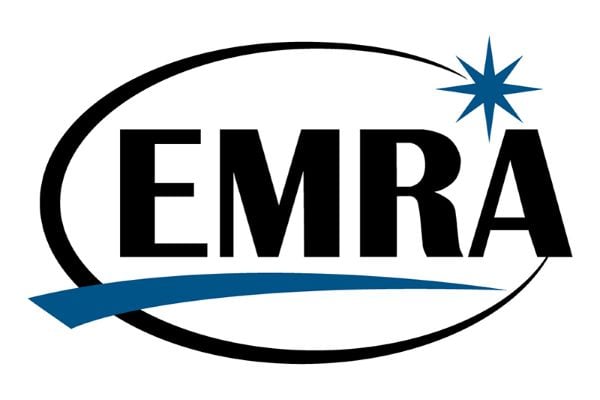
Dec 19, 2017

Jan 01, 2018

Curriculum Vitae Overview
- EM RESIDENT
- ADVERTISE & EXHIBIT
- Connect with us

EM can lead the way in addressing healthcare inequities. But first we must face the deficiencies of diversity, equity, and inclusion in our field. It starts with training.
Make sense of the chaos of the trauma bay with the emra trauma guide., mobilem put every emra guide in your pocket..
© 2021 Emergency Medicine Residents' Association | Privacy Policy | Website Links Policy | Social Media Policy

Cover Letter Advice & Samples
Cover letter advice and samples.

Section Menu
- Draft your cover letter knowing it is your first writing sample.
- Understand that a cover letter should persuade the reader.
- Use the cover letter to “connect the dots” of your experiences.
- Resist the temptation to restate your resume.
- Keep your cover letter to one page.
- Use the font style and point size that match your resume.
- Remember that the reader is busy: less is more.
- Ensure your cover letter is error free.
Cover Letter Construction
Address block and salutation.

- Address the cover letter to an actual person.
- Research websites or call employer to determine recipient’s name.
- If you cannot find the name of a hiring contact, address your letter to the head of the unit, department, or office.
- While this is the least-preferred option, you may address your letter to “Dear Hiring Committee” if you cannot locate the name of an actual person.
- For firms, address your letter to the recruiting director. For larger firms, contact information for recruiting directors is available at www.nalpdirectory.com in the Basic Information section.
- In the salutation, include the recipient’s title and last name (e.g., “Dear Ms. Raintree”) or write the recipient’s entire name (e.g., “Dear Jamie Morales”).
Paragraph One

- Tell the employer who you are and what you are seeking.
- Highlight (past, present, and future) geographic connections.
- Indicate if you have talked to students/faculty/friends/alumni who speak highly of the organization.
Paragraph Two

- Show that you understand the employer’s mission/practice, the work its attorneys do, and the clients it serves.
- Demonstrate your proven interest in and connection to that mission/practice, work, and clients.
Paragraph Three

- Describe skills you will contribute to support that mission/practice, work, and clients.
- Provide evidence from your experiences and coursework.
Paragraph Four

- List the documents included with the letter.
- Tell the employer how to get in touch with you by email, telephone, and mail.
- Convey your availability for a conversation, mentioning upcoming trips to the area.
- Thank the employer for considering you.
- Mention availability of Yale summer funding, if applicable.
- Optional: Promise that you will follow up in a few weeks if you think the employer would appreciate the diligence.
Sample Cover Letters (PDF)
First Year Student Examples | Second Year Student Examples | Third Year Student Examples
CREATE A JOB ALERT
- Receive new jobs by email.

Jobseeker sign in or Create account

Physician Cover Letters: Why Writing a Good One Is As Important As Ever
Career resources content posted on NEJM CareerCenter is produced by freelance health care writers as an advertising service of NEJM Group, a division of the Massachusetts Medical Society and should not be construed as coming from, or representing the views of, the New England Journal of Medicine , NEJM Group, or the Massachusetts Medical Society
Physicians seeking a practice opportunity might think of the cover letter as an old-fashioned, generally unimportant component of their application for or expression of interest in a position, but that is not the case. In this digital age of clipped, often rapid-fire communications, the cover letter has become more important than ever because it offers a way to differentiate the physician from other candidates. It provides a vehicle for sharing personal and professional information that might be important to prospective employers but doesn’t quite fit in the CV. The cover letter should be brief, well written, professional and positive in tone, and absolutely error-free. It should also give the recipient the sense that the physician has researched the opportunity or organization before writing the letter.
By Bonnie Darves
When a physician encounters the seemingly perfect practice opportunity — with a mid-sized group in their hometown that is affiliated with a health system that has an excellent reputation — it’s tempting to quickly compose the requested cover letter to accompany her CV and send it off.
Yes, it is smart to express interest in a desirable position as soon as possible, but it’s not prudent to view the cover letter as a mere formality. Today, when so much communication between physicians and recruiters or prospective employers is electronic — in either brief email responses or via online forms — the cover letter has become increasingly important. Here’s why: The carefully crafted letter offers an opportunity to differentiate the resident or fellow from other physicians who respond, and a chance to demonstrate highly personalized interest in the position.
“The cover letter’s value is certainly not decreasing in the digital age. Because it is usually the second contact physicians have with an organization, it is very important,” said James Tysinger, PhD, vice chair for professional development in the University of Texas Health Science Center department of family and community medicine in San Antonio. “It is your opportunity to include something about who you are, and to provide information that won’t be in your CV about why the position and the geographic location interest you.” For the resident seeking a fellowship, the letter is the ideal vehicle to convey to the program director that the physician has researched the program’s focus and reputation, he added.
Longtime recruiter Regina Levison, president of the national firm Levison Search Associates, agrees that the geographic preference statement is a vital piece of information that should appear early in the letter. “The geographic ‘connection’ to the opportunity’s location is the most important message you can include — whether it’s because you grew up there, have relatives in the region, or simply have always dreamed of living or working there,” Ms. Levison said. “Health care organizations today are not just recruiting to fill a specific opportunity; they are recruiting for retention.” As the health care delivery system changes to incorporate accountable care organizations and quality focused reimbursement, organizations are seeking physicians who will “stay around” to help meet long-term organizational objectives.
Craig Fowler, president of the National Association of Physician Recruiters (NAPR), and vice president of recruiting and training for Pinnacle Health Group in Atlanta, urges residents to include at least an introductory cover letter or note with their CV, even when it’s not requested. In his experience, 8 out of 10 physicians who express initial interest in a position don’t take the effort to write a letter unless asked.
“The cover letter really is a differentiator, and even though a recruiter will always look at your CV first, the letter is nice to have. I often feel that it gives me a sense of the physician — a good letter can make the physician come to life,” Mr. Fowler said. He enjoys, for example, learning about the physician’s personal interests and family, in addition to what he seeks in a practice opportunity.
Peter Cebulka, director of recruiting development for the national firm Merritt Hawkins, agrees that the cover letter can provide information that isn’t appropriate in a CV but could be important to a hiring organization. “The letter gives you a chance to talk about your professional goals, or why you’re committed to a particular area or practice setting,” Mr. Cebulka said. It can also highlight something compelling about the physician’s residency program that the recipient might not know.
If there are gaps in the CV that are not sensitive in nature, and therefore don’t require a phone conversation, that information should be included in the letter. “It’s important to briefly explain gaps because your application might be passed over if you don’t,” Mr. Fowler said.
Jim Stone, co-founder and president of The Medicus Firm, a national physician search company, offers helpful guidance on incorporating a career objective in the cover letter. “You may want to include a career objective or job search goals, but be careful not to be too specific or you may rule yourself out of consideration,” he advised. “Therefore, if there is one goal that really sums up your search, or some objective that is a must-have for you under any circumstances, it would be okay to include that.”
On another note, Mr. Stone urges physicians to include brief examples of any soft skills, such as communication, teamwork, technological aptitude, leadership, or problem solving.
Format and structure: short and targeted works While there are no rules per se about a cover letter’s length or content, there are general guidelines for what works best and is likely to be well received. (See “Cover letters: What to do, what to avoid” section at the end of this article.) Dr. Tysinger, who counsels residents and practicing physicians on preparing CVs and cover letters, and frequently presents on the topic, recommends a single-page, three-paragraph format delivered in a professional, business letter layout, in simple language. Following is his basic guidance on the letter’s structure:
- First paragraph: Introduce yourself and state why you are writing — whether that is to be considered for a specific position, to express general interest in joining the organization, or the recommendation of a colleague.
- Second paragraph: Provide brief details about yourself and why you are interested in the opportunity and the location. Note any professional connections to the opportunity or organization, and any special skills or interests, such as management or teaching.
- Third paragraph: Thank the recipient for the opportunity to apply and for reviewing your CV, and end the letter with a statement indicating that you look forward to hearing from the recipient soon.
Other sources agreed that cover letters should not exceed one page, unless special circumstances dictate an extra paragraph or two. In that case, a two-page letter is acceptable. Ms. Levison advised briefly summarizing education and training in the second paragraph, and if it’s the physician’s first opportunity search, stating briefly why he became a physician.
It’s best to avoid going into extensive detail about personal interests or extracurricular pursuits. That could give the recipient the impression that the physician is more concerned about lifestyle than medical practice.
Professional tone, error-free content are musts It should go without saying that the cover letter must be professionally written and free of spelling or grammatical errors, but unfortunately, that’s not always the case. All of the recruiters interviewed for this article have received cover letters that are poorly written or, in some cases, replete with misspellings; all agreed that an error-riddled letter could prevent its writer from being considered for an opportunity regardless of her or his qualifications.
Of course, word processing programs include spell-checkers and, usually, some grammar-checking functionality. That’s helpful, but it isn’t sufficient vetting to ensure the letter is in excellent shape. Because of the letter’s potential importance, physicians should have several trusted individuals — on the professional and personal side — review the document, including a professional editor, if warranted. “If writing isn’t your strong suit, or English isn’t your first language, do get professional advice before you finalize the letter,” Mr. Cebulka recommends.
Ms. Levinson offers pointed advice regarding double-checking for errors. “Are there any typos or mistakes that would make the new organization question your ability to keep accurate records?” she said. It’s worth noting that some recruiting firms offer assistance with cover letter writing, but it’s best not to count on that service.
Striking the right tone in the cover letter can be somewhat challenging when the resident doesn’t have a good sense of the organization offering the opportunity. Some hospitals or groups are very formal, and therefore expect to receive formal communication. Others might be somewhat casual, from the standpoint of their culture, and therefore less inclined to bring in a physician who comes across as stiff, even if she isn’t. For these reasons, it’s smart to research the hiring entity to the extent possible before finishing the letter. The group’s website or the health system’s physician portal are good starting places to gauge the culture, but a discussion with a physician who practices there, happily, also can be helpful.
Ideally, the letter’s tone should be professional but friendly, and should sound like its writer, and not like a cookie-cutter form letter. “The letter should be professional and warm, and the tone should also reflect how you would communicate with patients and staff,” Ms. Levison said.
“A little colloquialism is OK, if it shows your personality,” Mr. Fowler maintains, provided the overall tone remains professional.
The sources concurred that the cover letter is not the forum for including a laundry list of the physician’s position parameters, or for negotiating compensation or other potential contract terms. Physicians in a highly recruited specialty might mention required equipment or infrastructure, if the lack of those items would preclude further discussion. But for the most part, those specifics should be left for an on-site interview.
“If the parameter is a potential deal-breaker, you can mention it, but avoid sounding inflexible,” Mr. Cebulka advised. That means not setting limits on the amount of call, or number of night shifts or weekends, for example. Those details can be discussed and possibly negotiated later.
Very important parameters should, however, be provided to the recruiter outside the context of the cover letter if such detail is requested. That’s especially important if the recruiter will introduce the physician to multiple opportunities.
“If you’re in a highly recruited specialty, there will be plenty of opportunities. But it’s helpful for recruiters to know what you’re absolutely looking for, so that you don’t waste your time or theirs,” Mr. Cebulka said.
Cover letters: What to do, what to avoid The sources who contributed to this article offered these additional tips on what physicians should do, or not do, when they craft their cover letters.
- Address the cover letter to an individual physician, practice administrator, recruiter, or other individual as the situation warrants, and not “to whom it may concern.”
- Be upbeat and positive. Ensure that the letter’s tone reflects your excitement about medicine, and that it reflects the way you would speak in an in-person interview.
- Include letters of reference with the cover letter if you’re looking for a fellowship or are formally applying for a specific position.
- Close the letter with a call to action if it’s an ideal opportunity (and likely a popular one). Let the recipient know that you will call in a few days to follow up, and indicate when you would be available to meet in person. It doesn’t hurt to state the best ways to reach you.
- Don’t sound desperate or beg for the job, even if it’s the perfect opportunity or you are worried about securing a position.
- Steer clear of “selling” yourself or making claims about why you would be the absolute best candidate. Instead, let your credentials and references make the case for you.
- Avoid sarcasm in any context, and generally steer clear of humor, unless you know the person to whom the letter is addressed very well.
- Don’t disparage individuals, programs, or institutions if you have had a negative experience somewhere — regardless of the reason.
Related Posts

Preparing Physician CVs and Resumes for Consumption in the Digital Age
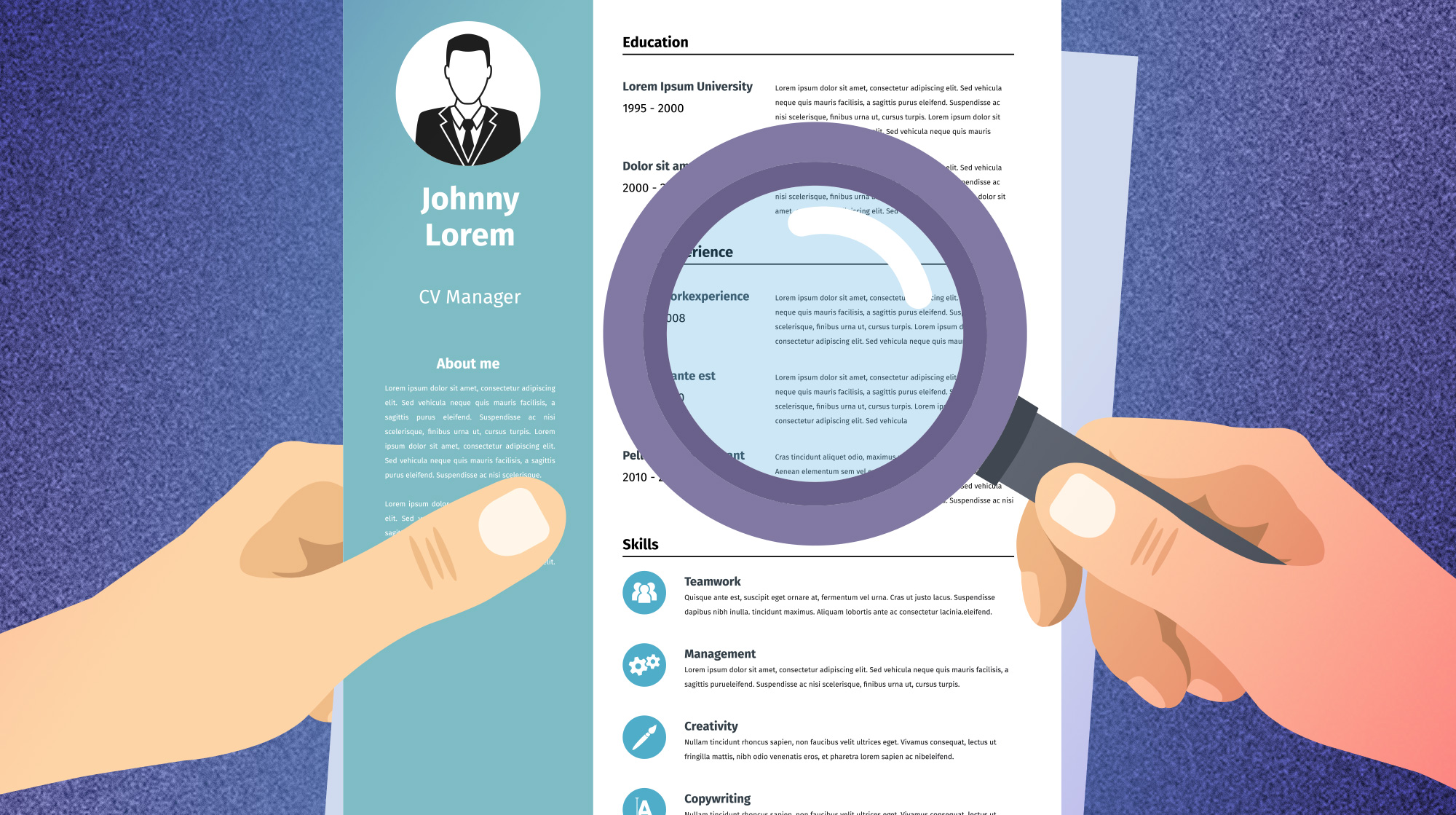
Creating a Physician CV That Shines

Maximizing Medical Meeting Networking Opportunities

Physician Job-Search Timeline: Delayed Approach Not Advised

Writing Compelling Physician Cover Letters
Explore prestigious scientific journals and award and funding opportunities to advance your research.
Access practice-improvement tools, including guidelines, measures, and practice management resources.
Learn to effectively advocate on behalf of neurologists and their patients, and access AAN position and policy statements.
Loading... please wait
We’re experiencing unusually high levels of traffic. Thank you for your patience.
How to Apply for a Fellowship
Residents & fellows.
Find useful tips and learn more about applying for fellowship positions. View a list of fellowship opportunities on the Fellowship Directory .
Inform Your Decision
- Clinical Neurophysiology Fellowship FAQ
- Epilepsy Fellowship FAQ
- Headache Fellowship FAQ
- Movement Disorders Fellowship FAQ
- Neuromuscular Medicine Fellowship FAQ
- Stroke/Vascular Neurology Fellowship FAQ
- Neuroimaging Fellowship FAQ
View Sample CV and Cover Letter
- Cover Letter
- CV Version 1
- CV Version 2
- CV Version 3
FROM ONE TRAINEE TO ANOTHER: HOW TO APPLY FOR FELLOWSHIP
- Start Early: Check program websites for vacancies and requirements for the application process. Make contact with programs toward the end of your PGY2 year, and no later than October/November of your PGY3 year. Look on the AAN Fellowships Page, individual program websites, such as FREIDA and other websites. Remember, since fellowship positions and availability are constantly changing, do not rely on information on these sites alone. Always contact the program you are interested in.
- Think About Your Career Goals: Why a fellowship? What specialty? Is this the right area and/or lifestyle for me? Compare specialties. Speak to people across multiple specialties. Keep your options open. Make time to reflect and decide your priorities.
- Get Informed: Consider the job market of your specialty, check out geographical areas, talk to other applicants or previous fellows, speak to your mentors (very important!), obtain input from professors. Where is the field going and where will it be when you are done training? In general, the application process varies widely based on the fellowship to which you're applying (e.g., neurocritical care now follows a match system).
- Draft a Timeline: Create a timeline of when to submit applications and prepare for interviews. The budget for travel. If you are going to need to arrange for time off work or clinical coverage while you are at interviews, do this early.
- Relax: Don't panic. The vast majority of program graduates have found fellowships that have suited their needs well.
- Organize: Prepare a list of questions, organize your certificates with all dates, be prepared for the application process in advance, have a portfolio available, use one email address for all applications. (Tip: Use your university address rather than personal email.)
- Draft Your Personal Statement: Personal statements should be one page or less. Be enthusiastic, communicate through your words. Get help with proofreading (by at least two people), especially if English is not your first language.
- Recommendation Letters: Obtain strong letters that are well-written. You need to sell yourself and be competitive.
- Research Experience: Whether publications or presentations, be able to demonstrate the significance of your work, be knowledgeable on your research topic, how your research will make an impact. Get excited about your research and think about how you want to continue research through Fellowship and beyond.
- Application: List community service projects, write clearly and demonstrate the spectrum of your academic record. List all pertinent accomplishments.
- Interview/Selection Process: Clinical performance, rotation evaluations, and interpersonal skills are important, as well as the reputation of your program, involvement in research, and medical knowledge (e.g., USMLE). Be prepared for questions (why are you different, why this field, this particular program, your weaknesses, where do you see yourself in 5-10 years?). Be confident. Ask your own questions. Eye contact and professionalism are important. Plan to arrive at least 15 minutes early, plan your route the day before and allow time for travel delays and mishaps.
- Keep in Contact: Send thank you notes, maintain follow-up, listen for vacancies or announcements, consistently check and re-check websites.
- Maintain Perspective: Stressful situations can blur your goals and/or perspective. Strategize early - you may have to make difficult decisions to make when the offers start rolling in!
Fellowship Cover Letter Examples And Template
Check out these fellowship cover letter sample and examples previously used by job seekers to land on job interviews as fellowship. use our ai cover letter generator to create a personalized cover letter as fellowship..
4.5 Star Rated / 523 Users

Automatically apply on 1000's jobs in a single click.
Job Application Automation
Interview Answer
Resignation Letter
Job application bot
Cover Letter Examples
© 2024 Copyright LazyApply.com
Careers & Employability
Library item label woz ere --> jobs jobs graduate careers part-time work during studies (student only) local and international job markets employers and networking equality and employment rights applications cvs, applications and interviews (student only) cvs and covering letters applications and personal statements interviews and assessment centres online tests graduate application support cvs, applications and interviews pathway graduate access to career connect study & academic careers study and academic careers postgraduate taught/ masters postgraduate research applications for further study funding for further study support for researchers career planning for researchers application resources for researchers events and workshops book an appointment postgraduate researcher experience programme (prep) experience & development placements and work experience placement year (student only) internships (student only) virtual work experience (student only) volunteering skills and personal development sheffield graduate attributes myskills academic and study skills extra-curricular activities services & support services employability & placement hubs events advice appointments myjobshop support for prospective students international students equal opportunities students graduates researchers and contract research staff employability systems career connect sheffield connect goinglobal graduates first contact us latest news information for employers information for employers recruit a student, graduate or apprentice events and activities support for local business terms and conditions of engagement contact us information for staff information for staff our aims employing a student placement and internship information support we offer employability data cover letters.
A covering letter highlights your relevant strengths and motivation for the job and organisation you are applying to, and markets you effectively by complementing your CV.

Preparing to write an application, CV or cover letter
Includes information on how to research the opportunity and how to reflect on how you meet the requirements.
Find out more

Writing a cover letter
Advice on how to write and structure an effective cover letter
Sample CVs and cover letters
Examples to give you inspiration for when you write your own CV or cover letter

Our free online course
Want to work through this topic in more depth? Explore our top-rated FutureLearn course
How to Succeed at: Writing Applications
- Current Students
- Online Only Students
- Faculty & Staff
- Parents & Family
- Alumni & Friends
- Community & Business
- Student Life

- Writing a Cover Letter for Research Publication
- Office of Research
Undergraduate Research
- Research Academic Calendar
- Student Support
- Frequently Asked Questions
Peer Reviewers

- Your manuscript contains grammatical errors. For example, on page 3, you used “their” when you should have used “there.”
- We have thoroughly proofread the manuscript and corrected all grammatical errors.
- The second paragraph of your introduction needs more details about findings by Owl and colleagues (2017). Be sure to explain their operational definition of “school spirit.”
We agree with Reviewer 1’s assessment of this paragraph and have decided to expand upon it. We have provided a more detailed summary of Owl and colleagues’ findings, including the operational definition they used for “school spirit” for their study.
- On pages 1 and 6, you did not include the year of publication in an in-text citation.
- We have included years of publication as they correspond to the sources listed on the references page.
- Two of the sources in your references lack a hanging indentation.
- This error has been corrected; all sources are correctly formatted with hanging indentations.
Unless otherwise specified in the email your received from the editors, you may choose whether or not to make any suggested changes. However, even if you do not change something that has been suggested, you must still address the suggestion in your response, and you must provide a compelling argument for your decision.
- “Theatre” should be spelled “theater” because “theatre” is not the standard American English spelling. This is a repeating occurrence.
- While Reviewer 1 is correct that most Americans do spell the word “theater,” scholars in my field would accept the use of “theatre” in the context in which I use it in this manuscript. Thus, I have chosen not to change this spelling.
Additionally, you should:
- Use a professional letter format (i.e., address the correct audience, state your purpose, and be signed by the author(s) of the manuscript) for your cover letter.
- Use a professional tone (i.e., use polite wording throughout the cover letter and response to reviewers, including when making your case for choosing not to follow a reviewer’s suggestion).
- Make sure you have made any changes both within the manuscript AND described them within your response.
- Make all changes and resubmit your manuscript, cover letter, and response to reviewers within the time frame allotted by the editors.
Contact Info
Kennesaw Campus 1000 Chastain Road Kennesaw, GA 30144
Marietta Campus 1100 South Marietta Pkwy Marietta, GA 30060
Campus Maps
Phone 470-KSU-INFO (470-578-4636)
kennesaw.edu/info
Media Resources
Resources For
Related Links
- Financial Aid
- Degrees, Majors & Programs
- Job Opportunities
- Campus Security
- Global Education
- Sustainability
- Accessibility
470-KSU-INFO (470-578-4636)
© 2024 Kennesaw State University. All Rights Reserved.
- Privacy Statement
- Accreditation
- Emergency Information
- Report a Concern
- Open Records
- Human Trafficking Notice
Cookie Notice
This website uses cookies, including third party ones, to allow for analysis of how people use our website in order to improve your experience and our services. By continuing to use our website, you agree to the use of such cookies.
American Fellowships
Funding: $8,000–$50,000 Opens: September 3 Deadline: November 15
The American Fellowship program began in 1888, a time when women were discouraged from pursuing an education. It is AAUW’s largest fellowship program and the oldest non-institutional source of graduate funding for women in the United States.
AAUW American Fellowships support women scholars who are pursuing full-time study to complete dissertations, conducting postdoctoral research full time, or preparing research for publication for eight consecutive weeks. Applicants must be U.S. citizens or permanent residents. Candidates are evaluated based on scholarly excellence; quality and originality of project design; and active commitment to helping women and girls through service in their communities, professions, or fields of research.
Dissertation: The purpose of the American Dissertation Fellowship is to offset a scholar’s living expenses while they complete their dissertation. F ellows must use the award for the final year of writing the dissertation. Applicants must have completed all course work, passed all preliminary examinations, and received approval for their research proposals or plans by the preceding November. Students holding fellowships for writing a dissertation in the year prior to the AAUW fellowships year are not eligible. Open to applicants in all fields of study. Scholars engaged in science, technology, engineering , and math fields or those researching gender issues are especially encouraged to apply.
Postdoctoral: The primary purpose of the American Postdoctoral Research Leave Fellowship is to increase the number of women in tenure-track faculty positions and to promote equity for women in higher education. This fellowship ’s purpose is to assist the candidate in obtaining tenure and further promotions by enabling them to spend a year pursuing independent research. Tenured professors are not eligible. Open to applicants in all fields of study. Scholars engaged in science, technology, engineering , and math fields or those researching gender issues are especially encouraged to apply.
Publication: The Short-Term Research Publication Grants provide support to scholars to prepare research manuscripts for publication. AAUW’s funding priority is for applicants whose work supports the vision of AAUW: to break through educational and economic barriers so that all women have a fair chance. Time must be available for eight consecutive weeks of final writing and editing in response to issues raised in critical reviews. These fellowships can be for both tenure-track and part-time faculty, and to new and established researchers. The purpose is to assist the candidate in obtaining tenure and other promotions. Tenured professors are not eligible. Open to applicants in all fields of study. Scholars engaged in science, technology, engineering , and math fields or those researching gender issues are especially encouraged to apply.
Award Amount
Dissertation Fellowship: $25,000
Postdoctoral Research Leave Fellowship: $50,000
Short-Term Research Publication Grant: $8,000
September 3, 2024 Application opens.
November 15, 2024, by 11:59 p.m. Pacific Standard Time Deadline for online submission of application, recommendations, and supporting documents.
April 15, 2025 Notification of decision emailed to all applicants. AAUW is not able to honor requests for earlier notification.
July 1, 2025–June 30, 2026 Fellowship year
When a date falls on a weekend or holiday, the date will be observed on the following business day.
Eligibility
Applicants of all American Fellowships must meet the following criteria:
- Members of the AAUW Board of Directors, committees, panels, task forces and staff, including current interns, are not eligible to apply for AAUW’s fellowships and grants. A person holding a current award is eligible for election or appointment to boards, committees, panels and task forces.
- American Fellowship candidates must be U.S. citizens or permanent residents.
- Fellowships are open to women, including people who identify as women, in all fields of study at an accredited institution of higher education. AAUW will make final decisions about what constitutes eligible institutions.
- Applicants may not apply for another AAUW national fellowship or grant in the same year.
- Distance learning/online programs: Fellowships support traditional classroom-based courses of study at colleges or universities. This fellowship program does not provide funding for distance learning or online programs or for degrees heavily dependent on distance learning components. Final decisions about what constitutes distance learning under these fellowships will be made by AAUW. AAUW will accept applications from applicants who are temporarily studying remotely due to COVID-19 precautions at their institution.
- American Fellowships are not open to previous recipients of any AAUW national fellowship or grant (not including branch or local awards or Community Action Grants).
A pplicants of Dissertation Fellowships must also meet the following criteria :
- The American Dissertation Fellowship must be used for the final year of writing the dissertation. Applicants must have completed all coursework, passed all preliminary exams, and had the dissertation research proposal or plan approved by November 1, 2023 . The doctoral degree/dissertation must be completed between April 1 and June 30, 2025 . Degree conferral must be between April 1 and September 15, 2025 .
- Dissertation Fellows are not required to study in the U.S.
- Students already holding a fellowship or grant for the purpose of supporting their final year of writing or completing the dissertation the year before the fellowship year are not eligible to apply for the American Dissertation Fellowship.
- The Dissertation Fellowship is intended for applicants who are completing their first doctoral degree.
- Applicants may apply up to two times for a fellowship for the same dissertation project.
A pplicants of Postdoctoral Fellowships must also meet the following criteria :
- American Postdoctoral Research Leave Fellowship applicants must hold a Ph.D., Ed.D., D.B.A., M.F.A., J.D., M.D., D.M.D., D.V.M., D.S.W., or M.P.H. at the time of application.
- Tenured professors are not eligible.
Applicants of Publication Grants must also meet the following criteria :
- American Short-Term Research Publication Grant applicants must hold a Ph.D., Ed.D., D.B.A., M.F.A., J.D., M.D., D.M.D., D.V.M., D.S.W., or M.P.H. at the time of application.
- Tenured professors are not eligible.
- American Short-Term Research Publication Grants are for tenure-track, part-time, and temporary faculty, as well as new and established researchers at universities. Scholars with strong publication records should seek funding elsewhere. Applicants must have time available for eight consecutive weeks of final manuscript preparation. While many recipients, especially full-time faculty members, will use the award s during the summer, recipients may use the funds at any time during the award year. Applicants must demonstrate that the support will result in a reduction of their ongoing work-related activities during the eight-week period .
- American Short-Term Research Publication Grants are not for preliminary research. Activities undertaken during the grant period can include drafting, editing, or modifying manuscripts; replicating research components; responding to issues raised through critical review; and other initiatives to increase the likelihood of publication.
- The grantee must be listed as the sole author, senior author, first author, or an author of equivalent significance.
Selection Criteria and Application Review
The panel meets once a year to review applications for funding. Awards are based on the criteria outlined here. The panel’s recommendations are subject to final approval by AAUW. Fellowships are awarded on a competitive basis according to funds available in a given fiscal year.
To ensure a fair review process, AAUW does not comment on the deliberations of the award panels. AAUW does not provide evaluations of applications. No provisions exist for reconsidering fellowship proposals.
Applications and supporting documents become the sole property of AAUW and will not be returned or held for another year.
In selecting fellowship recipients, the following criteria will be considered:
- Applicant’s scholarly excellence.
- Quality of project design.
- Originality of project.
- Scholarly significance of project to the discipline.
- Feasibility of project and proposed schedule.
- Qualifications of applicant.
- Applicant’s commitment to women’s issues in the profession/community.
- Applicant’s mentoring of other women.
- Applicant’s teaching experience.
- Potential of applicant to make a significant contribution to the field.
- Applicant is from an underrepresented racial/ethnic background.
- Applicant will be in an underrepresented area of the country and/or type of university other than a top-level research institution during the award year.
- Financial need.
The primary criterion for fellowship awards is scholarly excellence. Applications are reviewed by distinguished scholars and should be prepared accordingly.
American Postdoctoral Research Leave Fellowship and American Short-Term Research Publication Grant: When comparing proposals of equal merit, the review panel will give special consideration to women holding junior academic appointments who are seeking research leave, women who have held the doctorate for at least three years, and women whose educational careers have been interrupted. Preference will also be given to projects that are not simply a revision of the applicant’s doctoral dissertation and applicants whose work supports the vision of AAUW: to break through educational and economic barriers so that all women have a fair chance.
Regulations
American Fellowships funds are available for:
- Educational expenses (American Dissertation Fellowship and American Postdoctoral Research Leave Fellowship only).
- Living expenses.
- Dependent child care.
- Travel to professional meetings, conferences, or seminars that does not exceed 10 percent of the fellowship total (American Dissertation Fellowship and American Postdoctoral Research Leave Fellowship only).
Additionally, American Short-Term Publication Grant funds are available for:
- Clerical and technical support.
- Research assistance related to verification (not basic research).
- Office supplies, postage, copying and related expenses.
- Journal fees.
American Fellowships funds are not available for:
- Purchase of equipment.
- Indirect costs.
- Research assistants.
- Previous expenditures, deficits, or repayment of loans.
- Publication costs (except for American Short-Term Publication Grants).
- Institutional (overhead) costs.
- Tuition for dependent’s education.
- Tuition for coursework that is in addition to credits required for maintaining full-time status while completing a dissertation.
- Extended field research (applicable to American Dissertation Fellowships only).
Additionally, American Short-Term Research Publication Grants funds are not available for:
- Salary increase.
- Doctoral dissertation research or writing.
AAUW regards the acceptance of a fellowship as a contract requiring fulfillment of the following terms:
- All American Fellowship recipients are required to sign a contract as acceptance of the award. Retain these instructions as they will become part of the fellowship contract if the applicant is awarded a fellowship.
- An AAUW American Fellow is expected to pursue their project full time during the funding period (July 1–June 30). No partial fellowships are awarded. Fellowships may not be deferred.
- American Postdoctoral Research Leave Fellows and American Short-Term Research Publication Grantees cannot pursue a degree during the award period.
- Any major changes in plans for the award year must have prior written approval from AAUW.
- AAUW must be notified promptly of any change in the status of an application resulting from acceptance of another award.
- Stipends are made payable to fellows, not to institutions.
- The determination of whether there is a tax obligation associated with the receipt of an AAUW award is the sole responsibility of the applicant. Specific questions regarding income tax matters should be addressed with the U.S. Internal Revenue Service, the applicant’s financial aid office or a personal tax adviser. AAUW cannot provide tax advice. AAUW is a nonprofit, tax-exempt 501(c)(3) public charity founded for educational purposes.
Required Components*
Start the application process by clicking the Apply Now button below to access the application and create an account through our vendor site. Complete all required components in the following tabs.
- Recommendations: Standardized or form-letter recommendations are discouraged. AAUW does not accept references from dossier services such as Parment or Interfolio.
- Dissertation Fellowship applicants: Applicant must provide two recommendations from the applicant’s advisers, colleagues or others well acquainted with the applicant, their project and their teaching. One of the two recommendations must be from the applicant’s dissertation advisor.
- Postdoctoral Research Leave Fellowship applicants: Provide two recommendations from the applicant’s advisers, colleagues or others well acquainted with their project or work.
- Short-Term Research Publication Grant applicants: Provide two recommendations from the applicant’s advisers, colleagues or others well acquainted with the applicant, their project/work and their teaching.
- Dissertation Fellowship applicants: Submit transcripts for all graduate work and courses listed in the application. Transcripts must show grades for coursework transferred in. If the transcript shows transfer courses and credits without grades, a transcript from the institution where the courses were taken is required. If you studied at an institution that does not require coursework or provide transcripts, an institutional letter stating that is required.
- Postdoctoral Research Leave Fellowship and Short-Term Publication Grant applicants: Proof of degree: Submit transcript(s)** or original letter showing proof of a Ph.D., Ed.D., M.F.A., J.D., M.D., D.M.D., D.V.M., D.B.A., D.S.W., or M.P.H. degree.
- Dissertation Fellowship applicants: Dissertation certification form: Submit the form verifying the completion of all required coursework and qualifying examinations for the doctorate and approval of your dissertation research proposal (plan of research) signed by an institutional officer. No substitutions for this form will be accepted.
- Dissertation applicants: If you will conduct your project at an institution other than your own during the fellowship year, submit the form that indicates you have approval from the institution and the authority with whom the work will be done to conduct the research, laboratory or office space, and library privileges during the fellowship year. No substitutions for this form will be accepted. If you will conduct your project at your home institution, no project institution form is needed.
- Postdoctoral Research Leave Fellowship and Short-Term Publication Grant applicants: Submit the form that indicates you have approval from the proposed institution and the authority with whom the work will be done to conduct the research and have institutional affiliation, laboratory or office space, and library privileges during the fellowship year. No substitutions for this form will be accepted.
*A certified English translation is required for all components provided in a foreign language. Translations must bear a mark of certification or official signature that the translation is true and complete.
**All transcripts provided must include the applicant’s full name, the school’s name, all courses and all grades, as well as any other information requested in in the application instructions.
See More Fellowship and Grant Opportunities
For questions or technical support from ISTS, our technical consultant, please email [email protected] . Enter AAUW-AF if the website prompts you for a program key. We encourage applicants not to opt out of communications from ISTS, to ensure you receive important communications from AAUW.
Meet a Recent American Fellow
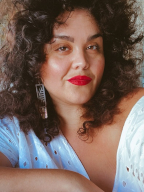
Sarah Biscarra Dilley ’s research is focused on matrifocal and gender-expansive governance from northern villages of yak titʸu titʸu yak tiłhini to Mokupuni o Hawai‘i, rooted in shared land and kinship-based epistemology. Her written, visual and material practice is grounded in collaboration across experiences, peoples and place, connecting extractive industries, absent treaties and enclosure to emphasize movement, embodied protocol and possibility. Her aspirations are toward cultural resurgence and the return of land to her families’ stewardship.
Our Alumnae

Ayana Johnson
2010–11 American Fellow and marine biologist, policy expert and conservation strategist. She is the founder and CEO of Ocean Collectiv and founder of Urban Ocean Lab.
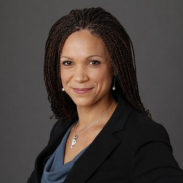
Melissa Harris-Perry
2001-02 AAUW American Fellow and Maya Angelou Presidential Chair at Wake Forest University, a columnist for the Nation, editor-at-large for ZORA, author of Sister Citizen: Shame, Stereotypes, and Black Women in America , and former host of The Melissa Harris-Perry Show on MSNBC.

Kimberly Ennico-Smith
1997-98 AAUW American Fellow and staff scientist with NASA who served as deputy project scientist for NASA’s New Horizons Mission, the historic project responsible for capturing unprecedented photos of Pluto.
Subscribe to our newsletter
You must enable JavaScript to sign up.

COMMENTS
Aim to write a letter that compliments your resume and states why you deserve the position or monetary award. Follow these steps to compose your cover letter as part of your fellowship application: 1. Determine the recipient. Before you compose the main content of your cover letter, find out who reviews your application.
Fellowship Cover Letter Writing Tips. It's no secret that academic jobs and fellowships in particular are highly competitive. Nature Magazine reports that most early-career researchers need to file at least 15 applications to land a single offer. Moreover, job seekers who submit more applications end up getting a higher number of on-site ...
Cover letter template for fellowship. Do your research before you start the cover letter, as this helps you structure it correctly and assists with the writing process. If you're creating a cover letter for your fellowship application, use the template below to start: [Name] [Address] [Phone number]
The template below outlines the purpose for each paragraph and what it should include: Your Name. [Your phone number] [Your email address] [Your mailing address] [Date] [Scholarship organization name] [Organization address] [Organization phone number] Dear [Mr./Ms./Mx. Recipient's name] / [Scholarship Committee],
speak or write on your behalf. Some formatting pointers: There is no single best format. Refer to samples for ideas, but craft your CV to best reflect you and your unique accomplishments. Unlike a resume, there is no page limit, but most graduate students' CVs are two to five pages in length.
Also known as a "letter of introduction" or "letter of application," a cover letter accompanies your application and should answer the following questions: How do you meet the criteria for this award/ fellowship? Skills/abilities/qualities in the context of your experiences as they relate to the specified requirements.
2. Watch the Length. Respect the time of the hiring manager by keeping your cover letter short. A well-written, direct, and concise letter of a few paragraphs is ideal. A cover letter should never be more than a page long. 3. Write a Personalized Cover Letter for Each Job Application. Your cover letter should demonstrate your unique interest in ...
1. Preparing to Write a Cover Letter. Before writing a cover letter, spend time doing the following: Find a particular fellowship or job description you'd like to apply to. Having an end goal will help you write your cover letter. Tailor your resume or CV to the job or fellowship you're interested in pursuing.
Middle paragraph (s) Closing paragraph. Letter ending and signature. Your cover letter should be one page long and use a simple, professional font, such as Arial or Helvetica, 10 to 12 points in size. Your letter should be left-aligned with single spacing and one-inch margins. Show Transcript.
Most fellowship and grant applications require a research proposal and personal statement; few ask you to write a cover letter. Still, there are some dissertation and postdoctoral fellowship applications where knowing how to write a strong cover letter can come in handy (take the Consortium for Faculty Diversity Dissertation Fellowship, for example).
A cover letter is typically the first thing the recipient reads in your fellowship application, so it needs to be convincing and well-written. Start a new document on your computer and choose a cover letter template if one is available. Make a header that includes your name (in larger and bolder font), followed by your address, phone number ...
Writing a cover letter for a fellowship requires careful thought and attention to detail. By following the tips and examples provided in this article, you can create a compelling cover letter that showcases your qualifications and increases your chances of securing a fellowship. Remember to tailor your letter to the specific fellowship ...
Cement your worth in the middle of your cover letter for scholarship. Show off your personal attributes and end goals. Stay relevant to the program and show the committee the impact you'll make. Finish with a CTA. Ask the question and offer something in return. Get your application read and get that interview.
7 Steps to Writing the Perfect SLP CF Cover Letter. Below are seven essential steps to follow when crafting a cover letter for your SLP clinical fellowship application: Step 1: Pre-Writing Preparation. Before reaching for pen and paper, take the time to research the fellowship program or organization you're applying to. Browse their website ...
2. The Opening Sentence. If your first line reads: "I am writing to apply for [job] at [company]," I will delete it and suggest a swap every time.
You can write a strong motivation letter that will increase your chances of being accepted into the fellowship program of your choice. Related: How To Write a Cover Letter (And Get Hired in 2022!) Motivation Letter For Fellowship Program . To Whom It May Concern, I am writing this letter to apply for the fellowship program at XYZ institution.
4. Finish with "the ask" and a "thank you". End your letter by asking the reader to look over your CV and contact you about an interview, and thank them for their time and consideration. Try something simple like, "I have attached a copy of my CV for your review.
Overview. Draft your cover letter knowing it is your first writing sample. Understand that a cover letter should persuade the reader. Use the cover letter to "connect the dots" of your experiences. Resist the temptation to restate your resume. The Basics. Keep your cover letter to one page. Use the font style and point size that match your ...
Include letters of reference with the cover letter if you're looking for a fellowship or are formally applying for a specific position. Close the letter with a call to action if it's an ideal opportunity (and likely a popular one).
Organize: Prepare a list of questions, organize your certificates with all dates, be prepared for the application process in advance, have a portfolio available, use one email address for all applications. (Tip: Use your university address rather than personal email.) Draft Your Personal Statement: Personal statements should be one page or less.
Use our AI cover letter generator to create a personalized cover letter as fellowship. Hello, I am writing in regards to the MLH Fellowship position. I am immensely excited about this opportunity to join such a prestigious company and contribute to its continued success. As a highly skilled and experienced individual, I feel confident that I ...
The body paragraphs in the letter may include descriptions of the applicant's past work, why you think they're a good fit for the fellowship program or an explanation of their character traits that contribute to their strength as a student. The body paragraphs contain the bulk of your recommendation. 5. Write a conclusion.
This document provides examples of cover letters for fellowship applications in different fields, including research, medicine, arts, public service, environmental work, STEM, and business. It emphasizes that a well-written cover letter can enhance an application by highlighting qualifications, experiences, and motivations. It then presents seven sample cover letter templates tailored for ...
Writing a cover letter. Advice on how to write and structure an effective cover letter. Find out more . Sample CVs and cover letters. Examples to give you inspiration for when you write your own CV or cover letter. Find out more . Our free online course. Want to work through this topic in more depth? Explore our top-rated FutureLearn course
Use a professional letter format (i.e., address the correct audience, state your purpose, and be signed by the author(s) of the manuscript) for your cover letter. Use a professional tone (i.e., use polite wording throughout the cover letter and response to reviewers, including when making your case for choosing not to follow a reviewer's ...
Dissertation: The purpose of the American Dissertation Fellowship is to offset a scholar's living expenses while they complete their dissertation. F ellows must use the award for the final year of writing the dissertation. Applicants must have completed all course work, passed all preliminary examinations, and received approval for their ...